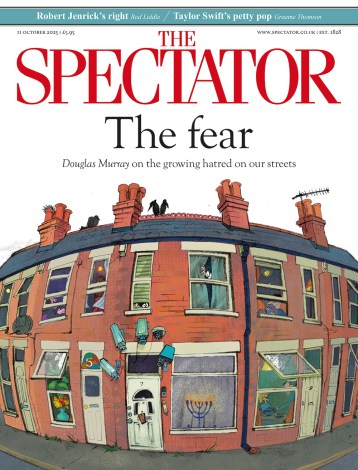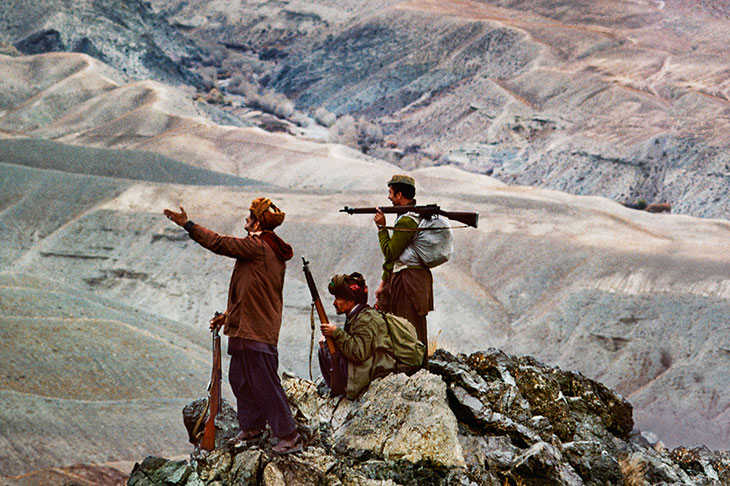Could it, at times, be frustrating to have taken one of the world’s most famous photographs? Steve McCurry’s ‘Afghan Girl’ (1984) is, according to the Royal Geographic Society, the most recognised photo on the planet. You can summon it to mind in a trice: a beautiful young refugee of about 12, her head covered with a rough red shawl, stares out at the camera with those pale green eyes.
But what Steve McCurry’s vast, World Atlas-sized new retrospective portfolio shows is just how many other, perhaps even better, photographs he’s taken of the country over the past 40 years; how many other Afghan girls there are in the shadow of that green-eyed superstar. One portrait of a child in blue-grey taken in Ghazni six years later is especially intense.
If, after an afternoon with McCurry’s Afghanistan, I rather resented that original girl, it’s only a tribute to the rest.
McCurry’s known as a war photographer and his biography sure fits the bill: he caught his first break, just before the Russian invasion of Afghanistan, by crossing the Pakistan border in local dress. He escaped with his film sewn into his clothes. McCurry has shot in Beirut, Cambodia, the Philippines, the Gulf War, the former Yugoslavia, Afghanistan and Tibet. He has a Robert Capa Gold Medal for exceptional grit and courage. But for all that, McCurry is most definitely also an artist.
He talked to me on the phone from a hotel room in Portugal. Other phones were ringing in the background and the feeling of an itinerary was heavy in the air. But on the subject of how to learn his art, McCurry was suddenly focused.
‘If you love pictures you should want to look at great pictures and pore over them,’ he said. Do some students not want to do that? ‘Well, if I say it’s a great pleasure to look at the work of someone like Cartier-Bresson, they look at me like I’m from another planet…. If you want to know about light, composition, shape and form and timing, that’s what to do. I guess if you are Leonardo da Vinci or Michelangelo or Orson Welles you could probably do things without any kind of inspiration or reference, but most of us mere mortals need to look and learn. And practise. Practice has a lot to do with it.’
There’s practice, and there’s patience. McCurry’s famous for rushing in to the hot spots but also for his ability to wait for the right conditions for the right shot. His subjects look so trusting and unguarded I had half-imagined that McCurry hid behind bushes, taking his subjects unawares.
He laughed: ‘Oh no, no never! You just get to know people. We spent time with Afghans and they are extremely friendly and hospitable, and they have a great sense of humour. I think, really, you start to see the humanity — the shared humanity.’
Has Afghanistan and have the Afghans changed much over the decades he’s been there? ‘Yes,’ said McCurry despondently. ‘When the Afghan world was more untouched, or when it was less influenced by neighbouring countries, there was a way they wore their hair, what they wore, it was all Afghan, it was their unique way of looking. Now everybody — even in small villages — has the internet, has TV and they start to feel self-conscious about their clan, their turban, maybe their pants or their this or their that. It’s just the way of the world, that’s the way of the whole world …’
Does this book then mark the end of your Afghan adventure? Would you go back to photograph Afghanistan again?
‘I was there last year, yes. I was in Kabul, it was crowded, there’s a lot of traffic, there’s always this nagging sense that at any moment there could be a car bomb somewhere. And I thought, wait a minute, I’m kind of repeating myself here. I walked down the same street ten years ago and it looked pretty much the same.’
The Taleban are taking the country again. Can you see, from your experience there, how that could happen. Why local people might accept them back?
‘Yes, they’re neighbours. They speak the same language, they’re Pashtun,’ said McCurry. ‘Then, on the other side, there are these foreigners running around who don’t speak the same language and in many cases don’t respect local customs. They come through your village, search your homes. They have drones. You can see how the negativity starts to stack up. The Taleban are doing terrible things as well but if you’re an Afghan you’re not going back to Cleveland at the end of your tour, you know. You’re there for ever. It’s a stalemate that makes no sense. Trump is saying send more troops in and it just doesn’t make sense.’
McCurry clearly feels the futility of war and the horror that all the Afghans have been through, but one of the most striking things about his book is how un-angry it feels. The photos are, for the most part, sensuous and lyrical. I asked: isn’t it sometimes uncomfortable for a distressing shot to be so beautiful? I was thinking in particular of a woman in a soft, ochre-coloured burka holding her injured son in Kabul in 1992. You can’t help but take pleasure in the light on the cloth, though the child in her arms is in tears. And of two boys in Herat in 1992, seen from behind, on crutches.
McMurray seemed oddly flustered: ‘Well I think that I had a particular interest and concern with composition and light so I never really thought about pictures as being … but yes, it has a certain poignancy…’
If he sounds defensive it’s perhaps because he’s recently taken some flak for seeming to tinker with his photographs post-production. In the spring of last year an Italian photographer, Paolo Viglione, noted that he’d moved a street sign on one photo, to better balance the composition, then other eagle-eyed puritans spotted other anomalies.
Once he’d gathered his thoughts on the subject of making pain look pleasing, McCurry gave a reply that seemed designed to answer all critics: ‘If I am making bad pictures to try to please somebody else, I’m not being true to myself and I’m not having fun. I’m not doing what has meaning to me. I basically photograph in a way that seems right for me and I guess if people don’t like it that’s perfectly fine, but I don’t know… It’s all good. There’s nothing else I’d rather do, and I feel like I’ve done with my life what I want to.’
‘If you wait,’ McCurry has said in the past, ‘people will forget your camera and the soul will drift up into view.’ Inevitably, any great photographer reveals his own soul, too, and what this book demonstrates is that it’s a mistake to think of McCurry as a reporter. He’s not recording a truth so much as, in the manner of all artists, making his own. ‘I’m a visual storyteller,’ he said during the Photoshop business last year, not a photojournalist. And all the better for that.







Comments